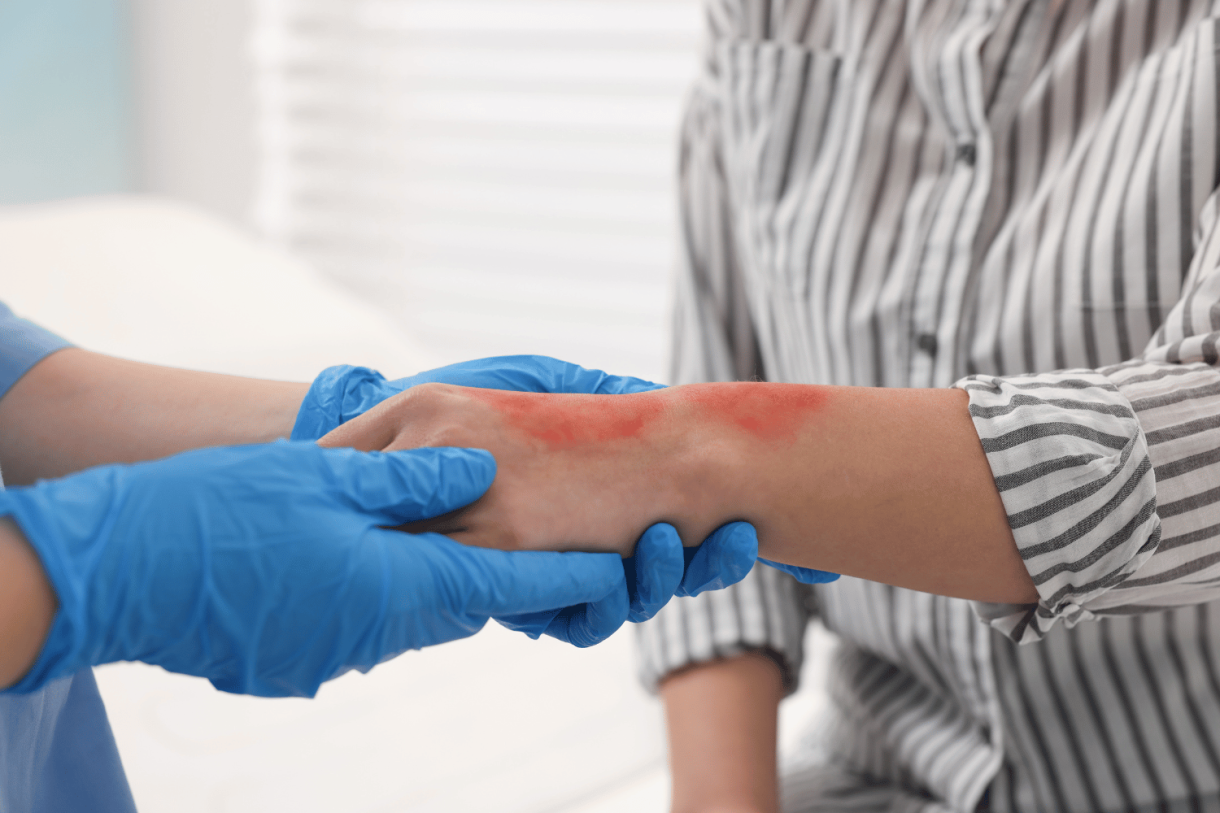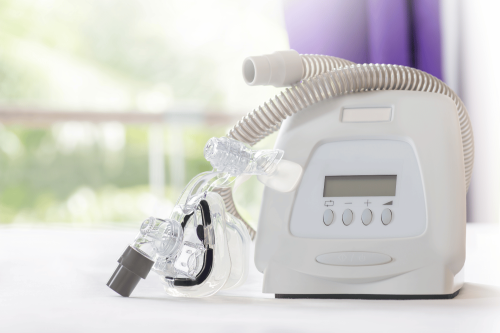
Imagine accidentally touching a hot surface or spilling boiling water on your skin—burns are one of the most common injuries, and they can happen in an instant. Burns occur when heat, chemicals, electricity, or radiation damage the skin and underlying tissues. The severity of burns can range from mild discomfort to life-threatening injuries, depending on the cause and depth of the damage.
Understanding the causes, symptoms, and first aid treatments for burns is crucial for minimizing harm and promoting recovery. In this blog, we’ll explore everything you need to know about burns, from identifying their severity to providing effective first aid. Stay informed and prepared to handle burn injuries confidently!
What Are Burns?
A burn is an injury to the skin and underlying tissues caused by heat, chemicals, electricity, or radiation. It commonly affects the skin but can damage deeper tissues. There are 4 degrees of burns:
1. First-Degree Burns
Description: The mildest form, affecting only the outer layer of skin (epidermis). Symptoms: Skin is red and painful, with minor swelling. No blisters. Reversible? Yes. The skin usually heals within a few days without permanent damage.
2. Second-Degree Burns
Description: Damage extends to the second layer of skin (dermis). Symptoms: Skin is intensely red, swollen, and very painful. Blisters will form. Reversible? Often, scarring can occur. Healing may take several weeks.
3. Third-Degree Burns
Description: A severe burn that destroys both layers of skin and may damage underlying fat tissue. Symptoms: The area may appear white, leathery, or charred. There may be little to no pain due to nerve damage. Reversible? Partially. This burn causes permanent tissue damage and requires medical intervention, such as skin grafts.
4. Fourth-Degree Burns
Description: The most severe form, extending through the skin to injure muscle, ligaments, and bone. Symptoms: The area is blackened or charred. Nerves are destroyed, so there is no feeling. Reversible? Rarely. Often results in tissue loss or amputation.
As a result, the skin can suffer significant damage. It can also be life-threatening. So make sure you take precautions and seek medical care for severe burns.
What Are the Causes of Burns?
Burns occur when an external source damages the skin and underlying tissues. This condition can be dangerous and may cause permanent damage if left untreated. Understanding the causes of burns can help prevent them. Here are the causes of burns:
Thermal Burns
When the body is exposed to extreme heat, it can quickly damage skin and underlying tissues. Thermal burns are caused by contact with flames, hot liquids (scalds), steam, or hot surfaces. The body cannot dissipate the intense heat fast enough, leading to cell death. This direct heat transfer cooks the tissue, as with cooking food. The severity depends on the temperature and the duration of the contact. Even brief contact with a very hot object can cause a severe burn.
When tissues are heated rapidly, proteins within the cells break down. This damages them and leads to a burn injury as the exposure continues.
Chemical Burns
Contact with strong acids, alkalis (bases), or other corrosive substances can cause chemical burns. These substances damage tissue on contact, often continuing to cause harm until they are neutralized or washed away. Unlike thermal burns, the damage is not caused by heat but by a chemical reaction that destroys cells. Everyday household products, such as drain cleaners and industrial chemicals, can cause these injuries. It's crucial to remove the chemical from the skin as quickly as possible.
If you don't wear protective gear or mishandle chemicals, your risk increases. In case of a chemical burn, flush the area with large amounts of cool water. If the chemical is a dry powder, brush it off first before rinsing.
Electrical Burns
Electrical burns happen when an electric current passes through the body. This can be from an electrical outlet, faulty wiring, or a lightning strike. The current generates intense heat as it travels through tissues, causing profound and severe damage along its path. The entry and exit points of the current on the skin may look small, but the internal damage can be extensive. This type of burn can also disrupt the heart's rhythm and cause other internal injuries. When electricity passes through the body, it can damage muscles, nerves, and organs.
Radiation Burns
Prolonged exposure to ultraviolet (UV) rays from the sun (sunburn) or tanning beds can cause radiation burns. Other sources include radiation therapy for cancer treatment or exposure to nuclear radiation. This type of burn is caused when radiation from the source damages the DNA in skin cells. The symptoms might not appear immediately but can develop over hours or days. The severity can range from mild redness to severe blistering and peeling, depending on the intensity and duration of exposure.
Friction Burns
Friction burns occur when skin is scraped or rubbed against a rough surface, resulting in both abrasion and heat burn. Common examples include "road rash" from a motorcycle or bicycle accident, or a "rug burn" from falling on a carpet. The friction generates intense heat that damages the outer layers of the skin. These burns can be painful and are prone to infection because the skin's protective barrier has been scraped away, leaving an open wound.
Familiar Places to Get Burns
Burns can affect any part of the skin. But you are more likely to get burned on parts of your body that are most frequently exposed to hazards. These are the areas most often involved in accidents.
- Hands and fingers
- Face and neck
- Arms and legs
- Feet and toes
These parts of the body are often used to interact with the environment, making them vulnerable. When handling hot objects, liquids, or chemicals, hands and arms are typically the first points of contact. They are also less protected by clothing, making them more susceptible to accidental burns.
What Are the Symptoms of Burns?
Burn symptoms vary depending on the cause and the extent of skin damage. Before it worsens, you must recognize the symptoms. Burns can progress and become severe if not treated in time. The symptoms differ in degree, so make sure you are well aware of them.
Below are the common symptoms:
Redness and Pain
In a first-degree burn, the skin may look red and feel painful, similar to a sunburn. There might be mild swelling. This is a warning sign that the outer layer of skin has been damaged by heat or another source.
Blisters and Intense Pain
As a burn progresses to the second degree, the affected area becomes intensely painful, very red, and moist. Painful blisters, filled with clear fluid, will form. This happens as deeper layers of the skin are damaged. Blisters are a sign of more significant injury.
Charred Skin and Numbness
In a third-degree burn, the skin may look white, leathery, or charred black. The area may be numb because the burn has destroyed nerve endings. This is dangerous because you might not realize how severe the injury is. This level of burn indicates deep tissue damage.
How to Treat Burns?
To treat a burn, immediately cool the area and protect it from further harm. Avoid using ice or folk remedies, as they can worsen the damage. Burn first aid helps you gently cool the skin, prevent infection, and protect the damaged area. Do not forget to seek medical help for severe burns even after giving first aid.
Here is how you can treat a burn:
Cool the Burn
Immediately run cool (not cold) water over the burn for 10-20 minutes. This helps to stop the burning process and reduce pain. Avoid using ice, as it can further damage the skin.
Remove Tight Items
Gently take off any jewelry, watches, or tight clothing from around the burned area. The area may swell, and removing these items early can prevent constriction and further injury.
Protect the Burn
Cover the burn with a clean, non-stick bandage or a sterile cloth. This protects the area from air, reduces pain, and helps prevent infection. Do not use fluffy cotton that can stick to the wound.
Avoid Breaking Blisters
If blisters form, do not break them. Blisters create a sterile barrier that protects the underlying skin from infection. If they fail on their own, clean the area gently and apply a new bandage.
Seek Medical Help
For severe (third- or fourth-degree) burns, or any burn on the face, hands, feet, or genitals, seek immediate medical attention. A doctor should also see burns that are large or caused by chemicals or electricity.
What Are the Severe Burn Complications?
Severe burns can lead to serious complications. Studies indicate that large burns have a high mortality rate, and survivors often face long-term health issues. For example, many burn patients experience chronic pain and severe scarring. Some severe burn complications include infections, nerve damage, shock from fluid loss, and significant scarring that can limit movement.
Additionally, severe burn injuries can lead to emotional and psychological impact. Individuals who experience severe burns may develop Post-Traumatic Stress Disorder (PTSD). This can happen due to nightmares, flashbacks, or intense fear related to the traumatic event.
If the condition causes disfigurement or physical limitations, it can make you feel helpless, leading to grief, anxiety, and depression. The trauma can be life-altering and make individuals feel isolated.
Things to Avoid if You Get a Burn
If you get a burn, you must cool it properly and avoid specific actions that can worsen the damage. It is essential to know what not to do.
Here are some everyday things to avoid:
- Do not apply ice directly to the burn.
- Do not use butter, oils, or ointments.
- Do not pop blisters.
- Avoid using tight bandages.
- Do not delay seeking medical help for severe burns.
Stay Prepared to Handle Burns
You must know the causes, symptoms, and treatment of burns to assess and treat them in time. First aid for burns helps you stay prepared. The early symptoms are red skin, pain, and mild swelling. Severe cases may cause blisters or charred skin. Do not panic; instead, seek help for serious injuries. Immediate first aid can help. Cool the area with running water and cover it with a clean cloth to minimize tissue damage. Recognize the signs early to prevent complications and ensure recovery.
FAQs
How long does it take for burns to heal?
Healing time varies by the burn's severity. First-degree burns usually heal in 3-6 days. Second-degree burns can take 2-3 weeks or longer. Third and fourth-degree burns take months to heal and often require surgery, such as skin grafts.
What should I do if a burn gets infected?
If you see signs of infection, such as increased pain, redness spreading from the burn, pus, or fever, contact a healthcare provider immediately. Infections can be severe and may require antibiotics or other medical treatment to prevent further complications.
Can I treat severe burns at home?
No, severe burns (third-degree and fourth-degree) cannot be treated at home. They are medical emergencies and require immediate professional care to manage pain, prevent infection, and begin the complex healing process, which often involves surgery.
When should I see a doctor for a burn?
You should see a doctor for any burn that is larger than 3 inches, is on the hands, feet, face, or major joints, or shows signs of being a second-degree or more severe burn. Chemical and electrical burns always require medical attention.
What are the best ways to prevent burns?
Install smoke alarms, set your water heater to a lower temperature, be cautious when cooking, keep hot liquids out of reach of children, and use protective gear when handling chemicals. Be mindful of hot surfaces and electrical safety to reduce your risk.








 Login with Google
Login with Google Login with Facebook
Login with Facebook